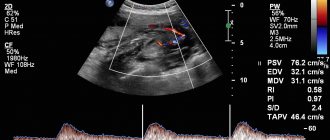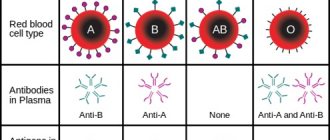Screening of the hemostasis system (that is, the blood coagulation system) is perhaps one of the most frequently prescribed tests in modern laboratory diagnostics. And this is easy to explain. Determination of hemostasis indicators is the most important stage of examination in identifying various disorders of the cardiovascular, gynecological, hepatological, phlebological, endocrine profile, etc. This study is indispensable when monitoring the condition of patients in the pre- and postoperative period.
This analysis is necessarily carried out if a person is identified as having a tendency to form blood clots or, conversely, if there is excessive bleeding (hyper- and hypocoagulation, respectively). The first variant of deviation from the norm is often found in elderly and heavy smokers, and in women who take oral contraceptives for a long time. Also, increased blood clotting can accompany infectious diseases, injuries, and burns. Frequent nosebleeds and a tendency to form bruises literally “out of the blue” can indicate the body’s predisposition to excessive bleeding.
The hemostasis system performs several vital functions. Firstly, it is maintaining a liquid state of blood in the vessels. Secondly, it stops bleeding (due to thickening and the formation of a clot-embolus) in case of vascular injury. In addition to the “options” of coagulation and anticoagulation, there is a third function - dissolving (fibrinolysis). It is she who is responsible for the resorption of the blood clot after the integrity of the vessel is restored. Of course, any failure in these delicate processes can lead to consequences dangerous to health and even life. Hemostasis screening allows you to assess how well the coagulation system copes with all its functions.
Standard and extended screening of the hemostatic system
The most commonly ordered is the standard test, which includes basic blood clotting assessment tests.
As a rule, a basic hemostasiogram (or coagulogram) includes:
- fibrinogen is a key test of the state of the coagulation system;
- prothrombin - changes in the level of this protein in the blood determine the condition of the liver and gastrointestinal tract;
- platelets - blood cells involved in the regulation of hemostasis;
- prothrombin index (PTI), prothrombin time (PTT), international normalized ratio (INR) - tests that reflect the external pathway of blood coagulation;
- activated partial thromboplastin time (aPTT) - a test that reflects the work of the internal coagulation pathway, the time required for the formation of a blood clot;
- thrombin time is the period required for inactive fibrinogen to convert into fibrin.
However, many conditions require extensive research. In essence, an extended hemostasiogram is the same test, but in addition to the basic parameters indicated above, it includes such important indicators as:
- antithrombin III and protein C are factors of the anticoagulation system; their insufficient level indicates a risk of blood clots;
- D-dimer is an element of the blood clot resorption system; high values may indicate kidney pathology, diabetes mellitus, and gestosis;
- lupus anticoagulant - an indicator that allows you to confirm or refute the fact that a patient has systemic lupus erythematosus or another autoimmune pathology;
- plasma tolerance to heparin is a parameter indicating coagulation function; an elevated level may indicate problems in the liver, heart failure, prethrombosis, etc.;
- soluble fibrin-monomer complexes (SFMC) - products of dissolution of a blood clot during fibrinolysis; an increase in their level may indicate connective tissue pathology, sepsis, thromboembolism;
- plasma recalcification time is an indicator of the formation of a fibrin protein clot; this parameter reflects the coagulation process as a whole;
- activated recalcification time (AVR) is the period required for the formation of fibrin; a shortened time indicates the tendency of the subject’s body to form blood clots, an extended time indicates increased bleeding.
Coagulogram, expanded
Coagulogram, extended - a set of indicators of the blood coagulation system, recommended during pregnancy, recurrent miscarriage and for patients with a high risk of developing complications from the hemostatic system (blood coagulation). Normally, the body constantly maintains a balance of blood coagulation and anticoagulation systems. Pregnancy is a period when multiple restructuring of the hemostatic system occurs, because blood flow in the placenta is formed, hormonal levels change and the body strengthens coagulation factors (physiological hypercoagulation) to avoid the consequences of bleeding during childbirth.
What is included in the complex?
Mandatory screening indicators:
- APTT
- Prothrombin (time, according to Quick, INR)
- Thrombin time
- Fibrinogen
Antithrombin III is a natural anticoagulant; its decrease is one of the reasons for recurrent miscarriage and fetal death.
D-dimer is a marker of fibrin breakdown (fibrinolysis. Used to monitor pregnant women over time.
Lupus anticoagulant, screening - used to diagnose antiphospholipid syndrome, the onset of which is often observed during pregnancy, causing miscarriage and other complications.
In what cases is the Coagulogram complex, expanded, prescribed?
- In case of a normal pregnancy and the absence of risk factors, once, then according to the decision of the attending physician.
- In case of complicated pregnancy and/or the presence of risk factors - repeatedly, monitoring over time (decided by the attending physician)
- Patients with miscarriage
- Dynamic observation and assessment of the effectiveness of therapy in patients with cardiovascular diseases and the risk of developing thrombosis
What do the test results mean?
The result reflects the parameters of the hemostatic system at the time of the study, so influencing factors should be taken into account and monitored over time if there are deviations.
The interpretation is carried out by a qualified doctor, taking into account data from the anamnesis, examination and other research methods.
Test deadlines.
Extended coagulogram is prepared within 1-2 days
How to prepare for the analysis?
Blood is donated strictly in the morning, on an empty stomach (at least 8 hours of fasting) while observing the drinking regime. It is necessary to indicate the anticoagulants taken by the patient, NSAIDs (non-steroidal anti-inflammatory drugs - paracetamol, aspirin, Nurofen, diclofenac, etc.), oral contraceptives, antibiotics. No special preparation is needed.
Preparation for a hemostasiogram
Blood is drawn from a vein on an empty stomach - that is, the patient’s last meal should be 8-12 hours before the procedure. In the morning before the analysis, you can drink some pure still water. On the eve of the test, you should avoid stress, physical and mental fatigue, and do not drink alcohol. Do not smoke for at least 2 hours before taking blood.
Biomaterial should not be submitted for analysis earlier than 3-5 days after ultrasound, x-rays or physical procedures.
If it is necessary to monitor indicators over time, subsequent studies should be carried out under identical conditions: in the same laboratory, at the same time of day, etc.
Important! A few days before the test, you need to stop taking medications, especially those that affect clotting (for example, aspirin). If the patient takes such drugs on a regular basis, it is necessary to discuss this issue with the attending physician!
It is not advisable for women to undergo screening during menstruation - real data on hemostasis during this period may be distorted.
Hemostasiogram standard
[P 4.4]
| Price | Add 1010 rub. |
| Ready time | 1 day from the moment the biomaterial arrives at the laboratory |
| Material for research | Deoxygenated blood |
| Special conditions | Preparation for the study: on an empty stomach (12-hour fast). The study has restrictions on the time of collection in the Medical offices of the laboratory. |
| Where can you submit: | and during on-site service at home In medical offices |
| Analysis method: | aggregometry, optical and chromogenic coagulometry, ortho-phenanthroline test (OPMC) |
| analysis included in the following profiles |
|
Hemostasiogram standard is a comprehensive extended study of the hemostatic system, which allows assessing the ability of platelets to aggregate and the state of the main components of the hemostasis system: the blood coagulation system, the anticoagulant system and the fibrinolysis system.
Attention!
There are restrictions on the hours of blood collection at laboratory offices in Chelyabinsk and Kopeysk. For other information please call +7(351)245-7000. Due to strict blood storage conditions, the profile is not available for execution in Medical offices in Magnitogorsk. We ask you to clarify additional information by calling the unified information service +7(351)245-7000.
Defined parameters:
- platelet aggregation spontaneous, induced: with ADP, collagen, epinephrine
- prothrombin time
- fibrinogen
- Kwik activity in %
- INR
- APTT
- thrombin time -RFMK
- antithrombin-III
- plasminogen
- Prothromine time is the time of clot formation in the presence of a reagent - tissue thromboplastin. It is one of the most important indicators of the functioning of the blood coagulation system and allows you to determine conditions such as hypocoagulation (decreased blood clotting) and hypercoagulation (increased blood coagulation).
- The Quick blood clotting assay displays prothrombin activity as a percentage, determined from a calibration graph.
- INR (International Normalized Ratio) is a standardized measure of the ratio of a patient's prothrombin time to the prothrombin time of normal plasma, raised to the power of the International Sensitivity Index (ISI). Using INR, the degree of reduction in clot formation processes during treatment with indirect anticoagulants (warfarin, etc.) is assessed.
- Fibrinogen is a protein of the glycoprotein group, the first factor of the blood coagulation system. It is synthesized in the liver and is one of the main proteins of the hemostasis system, directly participating in the formation of fibrin clot and thrombus. In addition, it is a marker of inflammation and tissue damage.
- Activated partial thromboplastin time (aPTT) is the time of formation of a blood clot after adding calcium and partial thromboplastin, activators of coagulation processes, to a blood sample. The duration of APTT depends on the level of high molecular weight kininogen, prekallikrein and coagulation factors XII, XI, VIII and is less sensitive to changes in the amount of factors X, V, prothrombin and fibrinogen. An increase in aPTT duration is associated with an increased risk of bleeding, while a decrease is associated with thrombosis. APTT is used to monitor treatment with direct anticoagulants (heparin).
- Thrombin time is the time required for the formation of a fibrin clot when thrombin, an enzyme (factor IIa), is added to the plasma. Thrombin is necessary to convert the fibrinogen molecule into insoluble fibrin at the final stage of fibrin clot formation.
- Soluble fibrin-monomer complexes (SFMC) are markers of activation of intravascular coagulation (thrombosis, embolism).
- Antithrombin III is the main natural anticoagulant that prevents the formation of excess amounts of active coagulation factors. The mechanism of action is associated with inhibition of thrombin and activated factors IXa, Xa and XIIa. Congenital or acquired deficiency of antithrombin III leads to increased blood clotting and a high risk of thrombosis.
- Plasminogen is the main component of the fibrinolytic blood system, which is responsible for lysis of the fibrin clot and restoration of vascular patency.
Research is necessary:
- for a comprehensive assessment of the state of the blood coagulation system
- for examining patients when planning pregnancy, during pregnancy
- for the diagnosis of thrombotic conditions, antiphospholipid syndrome, hemophilia, DIC syndrome, etc.
- to monitor the state of the blood coagulation system while taking medications.
Back to section
Indications
A hemostasiogram is prescribed to expectant mothers 2-3 times before birth without fail. Indications for additional blood testing for coagulation are:
- increased uterine tone;
- varicose veins of the lower extremities, anus, esophageal veins;
- a history of miscarriages or miscarriages of pregnancies at different stages;
- diseases of the liver and kidneys that lead to disruption of their function;
- the presence of bad habits in a woman, which increases the risk of developing complications in the blood clotting function;
- presence of blood diseases in the family - hemophilia, thrombosis, varicose veins;
- frequent nosebleeds;
- autoimmune diseases;
- cardiovascular diseases;
- multiple pregnancy;
- fetoplacental insufficiency, late gestosis, intrauterine growth retardation;
- pregnancy resulting from IVF.
How to decipher the results
The result of a hemostasis study contains a lot of data, among which quantitative norms are especially important.
An excess of fibrinogen concentration in the blood (at a norm of 2-4 g/l) indicates the likelihood of hypothyroidism, acute infectious pathologies, and inflammatory diseases. In addition, fibrinogen levels increase during pregnancy, stroke or severe stress. The prothrombin index in a healthy person is 93-100%. If you deviate from these figures, you can talk about the risk of thrombosis, the tendency to bleed, and pregnancy. The prothrombin index is also affected by taking hormonal contraceptives - which is why it is so important to inform your doctor about the use of any medications.
The research data also contains the following indicators:
- Thrombin time is normally 11-18 seconds.
- Quantitative norms of antithrombin III in the blood are 71-115%
- The normal platelet count is 150-400 thousand / 1 μl.
Please note that you should not make a diagnosis yourself based on the results obtained. This should be done by your doctor.
Extended hemostasiogram is a mandatory test for all pregnant women!
07.09.2016
- subscribe to news
The list of necessary studies for pregnant women includes a hemostasiogram. These analyzes characterize hemostasis and allow early detection of disturbances in this system. In the body of the expectant mother, many processes go differently than before pregnancy. In particular, the activity of hemostasis increases, which is normal. However, there are also deviations from the norm. And this is already becoming dangerous for both mother and child. Disturbances in the functioning of blood systems can lead to irreparable consequences. In order to detect and neutralize all kinds of problems in time, a hemostasiogram is performed.
What is the activation of the hemostatic system associated with during pregnancy?
- a woman's hormonal levels change
- a new (uteroplacental) circulation appears
- The pregnant woman's body prepares for the inevitable blood loss during the birth of the child.
If there is a blood clotting disorder during pregnancy, there is always a risk of developing DIC syndrome.
DIC syndrome is considered one of the most serious complications in obstetrics, is often uncontrollable and poses a danger not only to the life of the fetus, but also to the life of the woman.
The opposite situation is possible. Due to a violation in the anticoagulant system, the blood becomes very thin. As a result, the risk of bleeding increases, especially during childbirth. In order to restore hemostasis, an analysis and further interpretation of the coagulogram is carried out. Based on the results of the study, treatment is prescribed.
Normally, this test is performed in each trimester of pregnancy.
Unscheduled if:
- there were miscarriages.
- Symptoms of gestosis are observed: increased blood pressure, swelling of the extremities, protein in the urine.
- there is a risk of miscarriage
Extended hemostasiogram includes:
- Fibrinogen is the most important test of the state of the coagulation system
- INR - international normalized ratio or prothrombin index
- AVR - activated recalcification time
- APTT - activated partial thromboplastin time
- Thrombin time
- RFMC - soluble fibrin-monomer complexes
- Antithrombin III
- XII a dependent lysis - Hageman-dependent fibrinolysis
- Euglobulin lysis
- Platelet aggregation tests (spontaneous, with ADP, with adrenaline, with collagen)
Indications for hemostasiogram:
- pregnancy examination
- if you have a history of thrombosis, heart attacks, strokes, varicose veins, various blood diseases
- examinations for liver diseases, cardiovascular and autoimmune diseases
- examination before and after surgery
- when prescribing anticoagulants
- when prescribing hormonal contraceptives (in this case, a hemostasiogram is performed once every 3 months)
The cost of an EXTENDED HEMOSTASIOGRAM in our clinic is 1600 rubles + 170 rubles for drawing blood from a vein.
DURATION OF HEMOSTASIOGRAM: 48 hours
Analysis for a HEMOSTASIOGRAM can be taken at the address: st. Dovatora, 10 a
Tuesday and Thursday from 8.00 to 8.30 by appointment only by phone: (351) 200-34-04
"Pros" and "cons" of a hemostasiogram
Analysis of the coagulogram allows you to correct the hemostasis of the pregnant woman, avoiding risks to the health of the woman and her baby.
The disadvantage of a hemostasiogram is that this analysis “sees” the pathology, but does not determine its exact cause. Additional research is needed for this. Also, performing a coagulogram takes time, which is impossible if you need to quickly assess the state of hemostasis.
A pregnant woman should not panic if she sees any abnormalities in the hemostasiogram analysis. Based on individual indicators of this analysis, it is impossible to make a correct diagnosis. After all, pregnancy changes the results of many studies. To fully assess hemostasis, the results of this analysis are considered together, which only an experienced doctor can do.
What hormonal medications did you take to stimulate ovulation?
- Gonal 34%, 5064 votes
5064 votes 34%5064 votes - 34% of all votes
- Clostilbegit 25%, 3671 votes
3671 votes 25%
3671 votes - 25% of all votes
- Menopur 17%, 2523 votes
2523 votes 17%
2523 votes - 17% of all votes
- Puregon 14%, 2088 votes
2088 votes 14%
2088 votes - 14% of all votes
- Decayed 8%, 1142 votes
1142 votes 8%
1142 votes - 8% of all votes
- Menogon 3%, 435 votes
435 votes 3%
435 votes - 3% of all votes
Total votes: 14923
Voted: 11004
January 17, 2018
×
You or from your IP have already voted.










